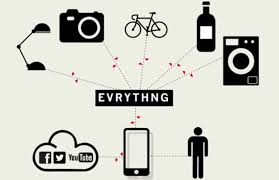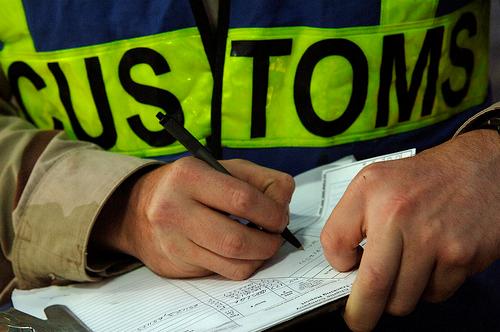We live in the digital age and technology is progressing day by day. Communication and data transfer modes have become faster. There has been evolutionary progress in every mode of communication so much that now we take these for granted as we can access information in the blink of an eye with a few clicks. The most commonly used method for online access is Wi-Fi. We all know how Wi-Fi has grown in the past decade and is now at the “ac” standard. However as mentioned early, progress is made by leaps and bounds and a wonderful new evolution might be coming soon.
The reason this thing is so vital to us is that even after a global spread of internet, some remote areas that lack the resources and infrastructure to deploy typically available internet solutions can now have internet without any major investment as the infrastructure/hardware needed to implement this newly devised solution is already in place. Almost 4 billion people that currently don’t have resources to access the internet can benefit from this. Using off-the-shelf LEDs and solar cells, Harald Haas and his team have pioneered a new technology that transmits data using light, and it may just be the key to bridging the digital divide. Read on to find out more about what the future of the Internet could look like.
Imagine using your car headlights to transmit data or surfing the web safely on a plane, tethered only by a line of sight. Harald Haas is working on it. He currently holds the Chair of Mobile Communications at the University of Edinburgh, and is co-founder and Chief Scientific Officer of pureLiFi Ltd as well as the Director of the LiFi Research and Development Center at the University of Edinburgh.
Haas has long been studying ways to communicate electronic data signals, designing modulation techniques that pack more data onto existing networks. But his latest work leaps beyond wires and radio waves to transmit data via an LED bulb that glows and darkens faster than the human eye can see. It’s called Li-Fi, an acronym for Light Fidelity and his group has published the first proof-of-concept results demonstrating that it is possible to to turn commercially available light emitting diode (LED) light bulbs into broadband wireless transmission systems. Let’s have a look at how Li-Fi works.
Li-Fi, or Light Fidelity, uses off-the-shelf LEDs to transmit data incredibly fast, and also in a safe and secure manner. Data is transported by the light,encoded in subtle changes of the brightness. If we look around, we have many LEDs around us, so there’s a rich infrastructure of Li-Fi transmitters around us. But so far, we have been using special devices — small photo detectors, to receive the information encoded in the data. I wanted to find a way to also use existing infrastructure to receive data from our Li-Fi lights. And this is why I have been looking into solar cells and solar panels.
A solar cell absorbs light and converts it into electrical energy. This is why we can use a solar cell to charge our mobile phone. But now we need to remember that the data is encoded in subtle changes of the brightness of the LED, so if the incoming light fluctuates, so does the energy harvested from the solar cell. This means we have a principal mechanism in place to receive information from the light and by the solar cell, because the fluctuations of the energy harvested correspond to the data transmitted.
Of course the question is: can we receive very fast and subtle changes of the brightness, such as the ones transmitted by our LED lights? And the answer to that is yes, we can. We have shown in the lab that we can receive up to 50 megabytes per second from a standard, off-the-shelf solar cell. And this is faster than most broadband connections these days.
And you may wonder, what’s the point? And the point is this: There will be a massive extension of the Internet to close the digital divide, and also to allow for what we call “The Internet of Things” — tens of billions of devices connected to the Internet. However such an extension of the Internet can only work if it’s almost energy-neutral. This means we need to use existing infrastructure as much as possible. And this is where the solar cell and the LED come in. It’s also designed to work in all sorts of weather conditions including fog and haze.
What’s really important here is that a solar cell has become a receiver for high-speed wireless signals encoded in light, while it maintains its primary function as an energy-harvesting device. That’s why it is possible to use existing solar cells on the roof of a hut to act as a broadband receiver from a laser station on a close by hill, or indeed, lamp post. And It really doesn’t matter where the beam hits the solar cell. And the same is true for translucent solar cells integrated into windows, solar cells integrated into street furniture, or indeed, solar cells integrated into these billions of devices that will form the Internet of Things. Because simply, we don’t want to charge these devices regularly, or worse, replace the batteries every few months.
For now, it is very much a lab demonstration, a prototype. But Haas and his team are confident that we can take this to market within the next two to three years. And they hope they will be able to contribute to closing the digital divide, and also contribute to connecting all these billions of devices to the Internet. And all of this without causing a massive explosion of energy consumption — because of the solar cells, quite the opposite.
Quite frankly we think that this is a really fascinating as well as useful evolution, more so because of the fact that it doesn’t need any major investment and the existing infrastructure is also already in place, along with the fact that it doesn’t have any impact on the energy consumption. Hence it could prove to be a very successful endeavor in the near future once the technology matures. What do you think? Let us know below!



